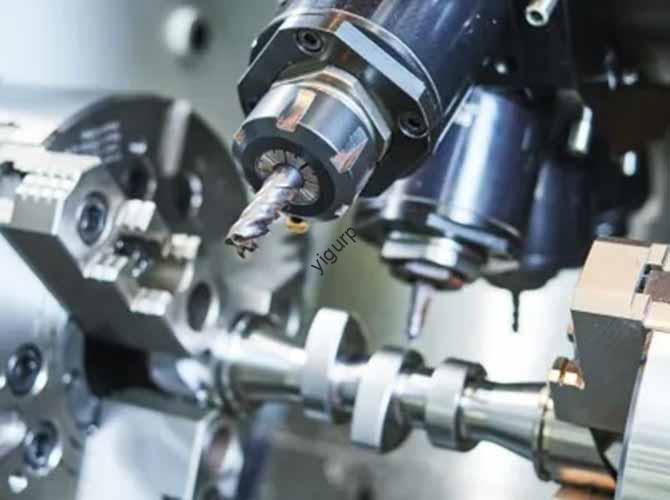Quando si tratta di CNC aluminum machining, even small adjustments to parameters can mean the difference between a flawless part and a wasted workpiece. Whether you’re a seasoned operator or a factory manager looking to optimize production, understanding how to fine-tune key parameters is critical. This guide breaks down the core CNC aluminum processing parameters with actionable data, confronti, e suggerimenti pratici per risolvere le sfide comuni.
1. Core CNC Aluminum Processing Parameters: Definizione & Optimal Ranges
The four most influential parameters—velocità del fuso, profondità di taglio, velocità di alimentazione, ESelezione degli strumenti—directly impact machining efficiency, finitura superficiale, and tool life. Below is a clear breakdown of each, with industry-proven ranges for aluminum alloys (PER ESEMPIO., 6061, 7075):
| Parametro | Definizione | Common Range for Aluminum | Key Impact Factor |
|---|---|---|---|
| Velocità del fuso | Rotational speed of the tool (measured in RPM) | 3,000–12.000 giri / min | Machine spindle type (BT30/BT40/BT50) & tool material |
| Profondità di taglio (DOC) | Thickness of material removed per pass | 0.5–5 mm | Workpiece tolerance & tool rigidity |
| Velocità di alimentazione | Distance the tool moves per minute (measured in mm/min) | 1,000–3,000 mm/min | Velocità di taglio & aluminum alloy type |
| Materiale dell'utensile | Material of the cutting tool | Carburo > Acciaio ad alta velocità | Resistenza all'usura & machining efficiency |
2. How to Set Spindle Speed: Avoid Tool Wear & Poor Finish
The spindle speed determines how fast the tool cuts through aluminum—but “faster” doesn’t always mean “better.”
Key Considerations:
- Machine Spindle Limitations: A BT30 spindle (common in small CNC machines) typically maxes out at 10,000 giri al minuto, while a BT50 spindle (for heavy-duty machining) may cap at 6,000 giri al minuto. Exceeding these limits risks spindle damage.
- Tool Material Impact: Strumenti in carburo (the most popular for aluminum) handle higher speeds (8,000–12.000 giri / min) than high-speed steel (HSS) utensili (3,000–6.000 giri / min).
Esempio: Per a 6061 aluminum part using a carbide end mill and BT40 spindle, set the speed to 8,500 giri al minuto. This balances efficiency and tool life—going to 12,000 RPM would cut cycle time by 20% but reduce tool life by 35%.
3. Profondità di taglio (DOC): Balance Efficiency & Tool Load
Why does DOC matter? A too-deep cut strains the tool, causing vibration and rough surfaces; a too-shallow cut wastes time.
Step-by-Step DOC Selection:
- Check the workpiece’s required thickness: If you need to remove 10 mm of material, split it into 2–3 passes (PER ESEMPIO., 5 mm → 3 mm → 2 mm) instead of one 10 mm pass.
- Match DOC to tool size: UN 10 mm diameter end mill can handle a 5 mm DOC, ma a 3 mm diameter end mill should max out at 1.5 mm DOC to avoid breaking.
- Test with a scrap piece: Before machining the final part, test the DOC on a small aluminum scrap to check for vibration.
4. Velocità di alimentazione: The Link Between Speed & Qualità della superficie
Feed rate is like the “pace” of the tool—too fast, and the part deforms; Troppo lento, and costs rise.
Common Feed Rate Mistakes & Correzioni:
| Errore | Sintomo | Aggiustare |
|---|---|---|
| Feeding too fast (Sopra 3,000 mm/min) | Workpiece bends or has burrs | Lower to 2,500–2,800 mm/min |
| Feeding too slow (Sotto 1,000 mm/min) | Long cycle times; tool overheats | Increase to 1,200–1,500 mm/min |
| Ignoring alloy type | Uneven surface finish | Use 1,000–1,800 mm/min for 7075 (Più forte) contro. 1,800–3,000 mm/min for 6061 (più morbido) |
5. Tool Selection for CNC Aluminum Machining: Carbide vs. HSS
Aluminum’s tendency to “stick” to tools makes tool choice critical. Let’s compare the two most common options:
| Caratteristica | Strumenti in carburo | Acciaio ad alta velocità (HSS) Utensili |
|---|---|---|
| Resistenza all'usura | Eccellente (lasts 3–5x longer than HSS) | Povero (needs frequent sharpening) |
| Speed Compatibility | Alto (fino a 12,000 giri al minuto) | Basso (max 6,000 giri al minuto) |
| Costo | Higher upfront ($20–$50 per tool) | Lower upfront ($5–$15 per tool) |
| Meglio per | Produzione ad alto volume; tolleranze strette | Small-batch jobs; simple cuts |
Per la punta: Choose carbide tools with alarge rake angle (15°–20°). This reduces cutting force and prevents aluminum from adhering to the tool’s edge.
6. Yigu Technology’s Perspective on CNC Aluminum Processing
Alla tecnologia Yigu, Abbiamo supportato 500+ manufacturers in optimizing CNC aluminum machining. Dalla nostra esperienza, 70% of quality issues stem from mismatched parameters—e.g., using a high feed rate with a shallow DOC. We recommend pairing ourYigu CNC spindle units (BT30/BT40 models) con strumenti in carburo: our BT40 spindle’s stable 10,000 RPM output, combined with a 15° rake angle carbide tool, cuts cycle time by 25% while keeping surface roughness (Ra) sotto 0.8 µm. For small-batch users, our HSS tool kits (pre-sharpened for aluminum) reduce setup time by 40%.
Domande frequenti: Common Questions About CNC Aluminum Processing Parameters
- Q: Can I use the same parameters for 6061 E 7075 alluminio?UN: NO. 7075 è più difficile, so lower spindle speeds (6,000–8.000 giri / min) e velocità di alimentazione (1,000–1.800 mm/min) are needed, rispetto a 6061 (8,000–12.000 giri / min; 1,800–3,000 mm/min).
- Q: How do I fix vibration caused by deep cuts?UN: Reduce the depth of cut by 30%, increase spindle speed by 10%, or use a tool with a larger diameter (PER ESEMPIO., switch from 6 mm a 10 Mm End Mill) for more rigidity.
- Q: When should I choose HSS tools over carbide?UN: HSS is better for small-batch jobs (meno di 50 parti) or simple cuts (PER ESEMPIO., fori di perforazione), as it’s cheaper upfront. Per la produzione ad alto volume, carbide’s longer life saves money.
